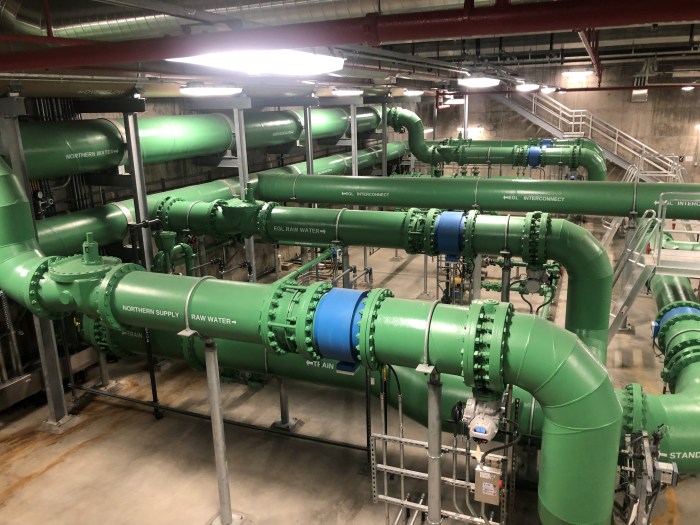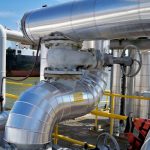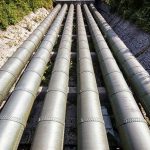I have lost count on how many times I have debated and argued the topic of piping / pipeline design pressure. “Cheresources” itself has dozens of posts related to this topic. I am now a firm believer that most problems do not have one unique solution in context of process design. You could have multiple design approaches each with its own merit and demerit and the process engineer needs to adopt the design solution as per the demand and need of the end-user. However, whenever a process design engineer puts forward a design solution he or she should know all the pros and cons of the solution he or she is proposing, and assess its suitability for the end-user, or plant operator from all aspects such as safety, operational ease, design life and the economics of the proposed solution.
Let us move on to the topic of piping / pipeline design pressure. There are two major approaches in deciding or finalizing the design pressure.
1. Shut-off based design pressure for centrifugal machines. This is specifically true for centrifugal pumps. For centrifugal compressors, this is somewhat tricky, since you need to determine the design pressure based on surge limit curve on the overall compressor curve. A simplified approach in determining the design pressure at the preliminary design stage would be to add up the maximum suction pressure of the centrifugal pump or compressor with the normal differential pressure at the rated flow times some margin (1.25 or 1.3). This approach of determining the design pressure for piping in discharge of centrifugal machines is commonly employed in design practices of many engineering or operating companies. This normally works fine for centrifugal machines.
How about positive displacement machines? These are constant volumetric flow machines and even if you block the discharge the machine will keep on pushing a constant volume in the connected discharge pipe. The consequence would be a rise in pressure with blocked outlet eventually leading to the motor driver of the PD machine stalling and / or discharge piping damaged (ruptured / distorted). As such, there is no real concept of shut-off head or pressure in PD machines since the pressure will keep on building up till either the motor stalls and / or the pipe or flange gasket ruptures. Thus, the approach adopted in the aforementioned paragraph for design pressure of centrifugal machines is not likely to work in case of PD machines.
PD machines discharge systems are protected by pressure safety valves (PSVs) set at such a pressure that it will protect the entire discharge piping system including pipe and other components in the discharge system from damaging overpressure. Providing the set-pressure for the PSV requires a different approach. There could be multiple PSVs protecting various sections of the discharge system with a common design pressure and set at that pressure. If equipment in the discharge system has a lower design pressure rating, PSV could be provided for that individual equipment with its set pressure equal to the equipment design pressure. Another approach could be to fully rate the discharge system, which means that the entire discharge system including piping and connected equipment would have the same design pressure throughout the system. Fully rating the system and minimizing block or isolation valves in the discharge system would allow to provide minimum number of pressure relief devices.
It is important to note that, if a blocked-in scenario between two isolation or block valves can be justified for a section of the liquid full discharge system, it would be essential to provide a pressure relief device for thermal expansion for that section. The key to this statement is liquid full. It does not apply for gas filled pipe sections that can be isolated.
2. Design pressure based on pipe pound rating class and using the pressure-temperature rating as provided in ASME B16.5 (formerly ANSI B16.5). For new engineers ASME B16.5 is the American standard for “Pipe Flanges and Flanged Fittings”. Although the standard is an American standard it has found universal acceptance in piping design and engineering. The basic premise of deciding the design pressure as per ASME B16.5 is that a flange is the weakest joint in any piping system and this is universally true, that the strength of any system depends on the weakest component in the system. I personally find this a more appropriate approach for assigning a design pressure value of any piping system based on a given design temperature.
ASME B16.5 has extensive tables for pressure rating against a given temperature for various pipe pound ratings and various pipe materials of construction. Pound ratings start from 150# and go up to 2500#. Material classes are designated with numbers starting from Material Class 1.10 to 1.18, Material Class 2.1 to 2.12, and Material Class 3.1 to 3.19. Interpolation can be done for temperature values between two temperature values given in the tables.
Let us take an example:
Pipe pound rating: 300#
Material Class: 1.1 (This material class in general defines carbon steel material)
Design temperature: 80°C
Design Pressure: 47.6 barg (calculated from ASME B16.5)
The Pressure-temperature rating for Material Class 1.1 in B16.5 is the first table. It gives a pressure rating of 50.1 barg corresponding to a temperature rating of 50°C and a pressure rating of 46.6 barg corresponding to a temperature of 100°C. If we interpolate for 80°C, the corresponding pressure would be 47.6 barg.
If I must provide a PSV on the 300# piping with material class 1.1 for blocked-in conditions and hydraulic expansion of trapped liquid in this pipe or pipeline, commonly referred to as a “Thermal Relief Valve” or “Thermal Expansion Relief Valve”, I would give it a set-point of 47.6 barg.
This approach for assigning a design pressure would be good even for a centrifugal pump because it provides you flexibility in operations. For example, most centrifugal pump manufacturers would provide an option of 3 different impellers with different flow versus head curves for the 3 impellers. If for operational flexibility reasons, an impeller is changed to have a higher differential head, then any pressure relief devices which were originally provided with a set pressure based on design pressure calculated based on shut-off pressure for the rated impeller, would be of no use and would require the PSV to be reset for a higher set pressure for the changed (higher differential head) conditions.
I consider it to be a good engineering practice to fully rate the pump discharge piping system (including pipe, fittings and equipment) which means that the design pressure is the same throughout the piping / pipeline from the pump discharge. There may be arguments about the high cost of having a fully rated system, but it is important to remember that any failure has its own cost in terms of personnel safety, environmental hazards and lost production which in most cases would be higher than having a fully rated system. Not having a fully rated system would also require detailed failure mode and effects analysis study to determine what additional safeguards are required to protect the integrity of the system.
Although I have categorically mentioned my preference for fully rated piping / pipeline systems, the industry practice for oil / gas flow lines from well heads is not to fully rate them downstream of the choke valve. The cost of fully rating the long distance flow line based on choke valve upstream would be astronomical. SIL rated “High Integrity Pressure Protection Systems” (HIPPS) are employed to protect the flow lines downstream of the well head choke valve in case high pressures are encountered due to choke valve failure. API 14C provides recommendations for providing safety systems in upstream oil / gas installations including well head flow lines.

Posted inGeneral Concepts

